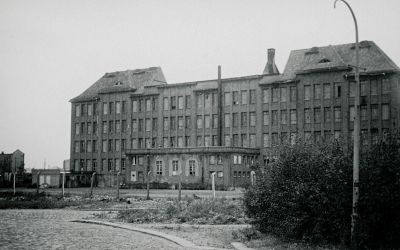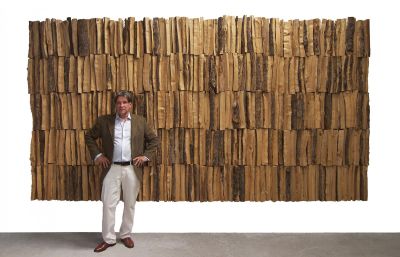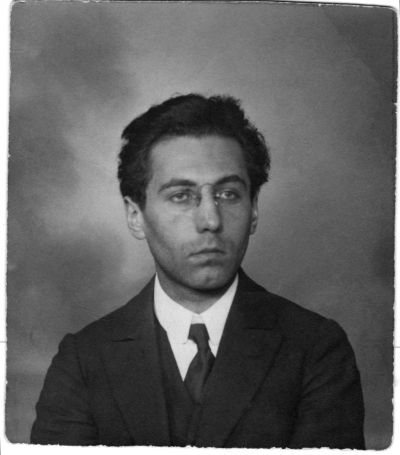Solidarni zza Muru – For Solidarność. Behind the Wall
Mediathek Sorted

























































“Versuch in der Wahrheit zu leben”
(Vaclav Havel – Czech author, opposition activist and politician)
The mathematician Ludwig Mehlhorn (1950–2011), a former civil rights campaigner in the DDR, is a protagonist of the exhibition with photos by Marian Stefanowski[*]. He inspired the Krzyżowa Foundation, and was a friend of Poland and of Solidarność.
Why am I starting with that? Because the exhibition could just as easily be called “For Solidarność. On BOTH sides of the Wall”.
So, “For Solidarność. Behind the Wall” represents just a snapshot of what happened in the divided Berlin, and this snapshot is often poorly lit, out of focus and incomplete. A single scene in a film that will most certainly not happen again ... At the exhibition in Łódź, the Gazeta Wyborcza quoted Stefanowski as saying “Lots of people showed good will. They all broke a small or a larger stone out of the wall. You would need a thousand rooms to be able to show the pictures of all these people”. The 58 black and white photograms are just a tiny piece of the enormous puzzle that historians have been putting together for quite a while now. When confronted with the exhibition, the witnesses of the events back then can only complete the fragments with their own experiences and stories, and what appears to be even more important is that they do this with experiences that are “different” to those of the photographers, the people involved in the exhibition and the curator, and this produces a high depth of focus. Ultimately, this was our aim, and has been since this exhibition was born. This aim was also achieved by viewing thousands upon thousands of negatives, even more of which were irretrievably lost in damp flats, during moves or due to the poor film quality.
In one of my interviews, I pointed out that the photographer wanted to take us back to the mood of West Berlin in the 1980s and to share this mood with others. But above all, he wanted to put the people that lived on both sides of the wall and stood together on the side of truth in this city. In this respect, the exhibition is a thank you to all individuals and to all institutions and organisations that helped or provided assistance, whether from the very start or just every so often; at least, as far as it was possible, and always from the perspective of the solidarity of people or even just out of sympathy for Poles, irrespective of political convictions, religion or skin colour ...
The “For Solidarność. Behind the Wall” exhibition consists of three topic blocks and ends with an epilogue entitled “Up @ Down”. The first section, under the heading “Berlin Zachodni – zachodni Berlin/ Berlin (West) – West Berlin”, tells the story of the divided town, its particular atmosphere and the border between two foreign, hostile worlds. But it is also about the Wall and about how the inhabitants of Berlin adapted the city’s unique character: some in their “golden cage” – the others in the capital of the workers’ paradise ...
In the second topic block “Solidarni / Für Solidarność”, there are ten portraits of people, in alphabetical order, who accompanied the photographer on a Solidarność pilgrimage through Berlin from December 1981 to the fall of the Wall. They seem to be individual characters, from completely different professions and often with completely different political convictions as well. Philologists, doctor, graphic artist, trainer or bookseller – all unified in one goal: to help Poland and the underground movement Solidarność.
The third topic block is entitled “...zza Muru / ...behind the Wall” and provides impressions of West Berlin and of the people who did not just shape this proud town but, over ten years, also lent her a “Polish” face that breaks down common stereotypes and prejudices. This section is a thank you to the many nameless (and often forgotten) volunteers without whom our work would not have been possible. In his laudation, Dr Piotr Olszówka wrote: “(...) Stefanowski’s photographs show (...) people who, in a hostile and terrified environment discovered the spirit of community, of solidarity. They were Poles and Germans, people from three countries and two nations.” This is an important statement that must never be forgotten. Especially today. In a Europe full of national conflicts and neo-fascist stupidity.
The epilogue with the heading “Up @ Down” only seemingly reaches beyond the scope of the exhibition. It begins with a photo without a motif (in the exhibitions in Łódź and Darłowo – a mirror) which is dedicated to all those who, on 4 June 1989, spoke out for freedom and democracy, not just in the Polish military mission in West Berlin but also in Poland. The other images are portraits of the people who consolidated these values by forming a new government. By the way: the epilogue, its contents and the manner of its presentation (photographs that seem to be hung randomly, but which actually form a sine curve that can only be recognised when seen from a certain distance) aroused strong emotions and even censorship, as was the case for the exhibition in the Dom Polonii in Warsaw where they said: “The Geremek has to hang somewhere else – not near Wałęsa“. At another exhibition site, we were even asked to dispense with the epilogue because it was not compatible with the host’s approach ... In the end, the exhibition was just not held there.
“Saving them from being forgotten” – this is something that everyone involved in the exhibition since 2012 agreed upon. How contemporary this sounds in an age in which you forget that there were two German states and a wall which separated not just the city but families as well.
Finally, a quotation from Dr. Piotr Olszówka: “You [the people of Berlin] supported the society which, after six months of freedom, was restrained once again. Your solidarity has prevailed. For 25 years. Is it permanent?”
Last but not least: IG Metall did not just provide space in their newly opened gallery: They also provided technical support. It was one of the few trade unions that actively provided help to the Solidarność underground movement. That should not be forgotten either.
Wojciech Drozdek, June 2018
PS. After many years, my friend Jadzia Konopacka from Łódź wrote to me in April 2018: “I remember the lorries of aid supplies from you. The auditorium in the theatre, in which Mikołajska, the Grabowskis, our cousin Edek Wende had performed, full of aid packages (...). I told the families of the internees about it so that they could register there to get the things that they needed. It was teeming with people. (...)”
























































































